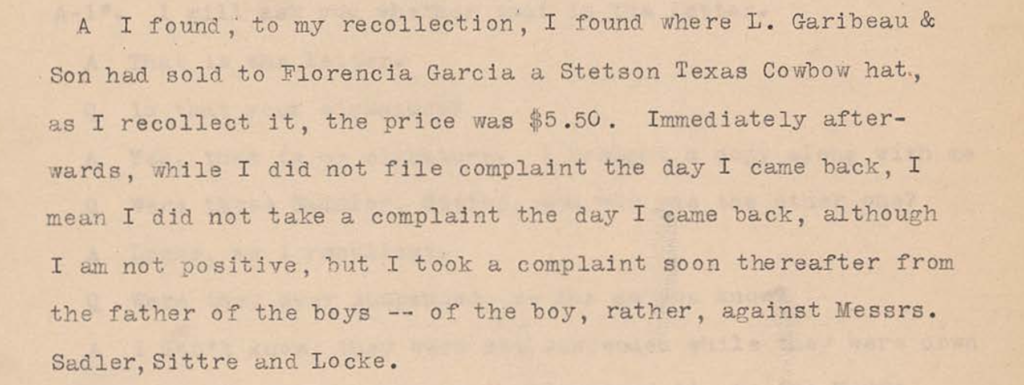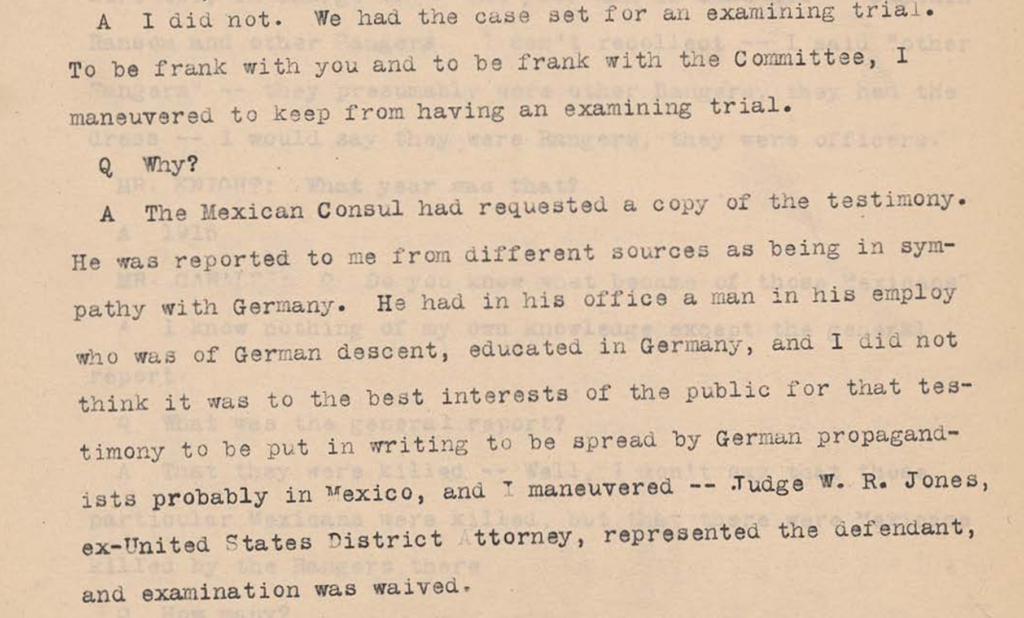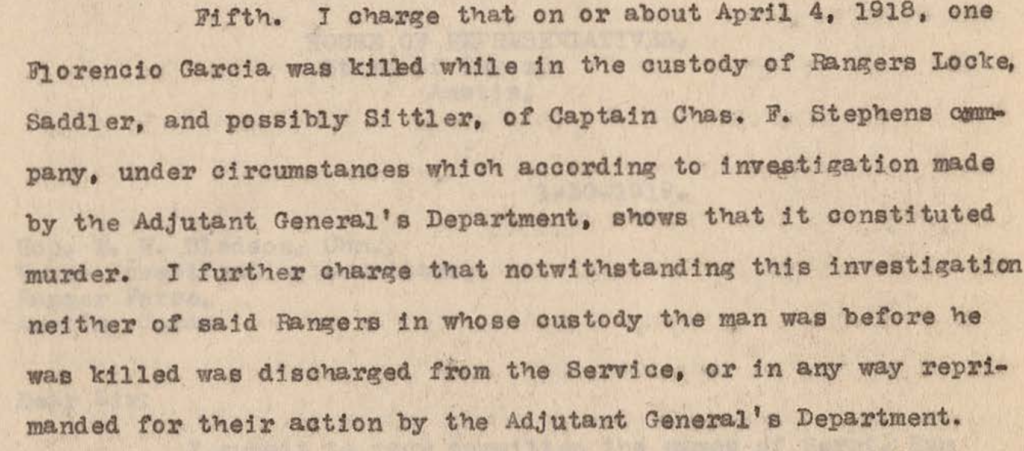#OTD in 1918, Florencio García was arrested by Texas Rangers Sadler, Sittre, and Lock at a ranch south of Brownsville. He was never seen alive again. A death certificate was issued and the Rangers were charged with murder.

The body of García, a 25 year old cattle herder born in Tamaulipas, was found after his father, Miguel, grew disturbed that he had not returned from work and began asking authorities to locate him. “the old man, the father of the boy, was at my office . . .”

“. . . two or three times and my residence once,” recalled Cameron County District Attorney Oscar Dancy. Miguel García also enlisted the help of a Mexican consul, who also contacted Dancy.
When an unidentified body was found between Brownsville and Port Isabel, Dancy took García with local law enforcement officers, a representative from the Consul’s office, and an unidentified Ranger to inspect the remains.
The worn clothing on the body, pierced by bullet holes, matched Miguel García’s description, and receipts for the sale of a Stetson hat matching that found on the remains were found at a Brownsville merchant.

Multiple witnesses testified that they had seen García in the custody of Rangers. Rangers initially wanted to chain him to a tree on a local ranch while they slept, but the rancher objected that that was “rather rough treatment” and had him put in local jail instead.

Miguel García also went to the Mexican government for help. On May 24, a month and a half after Florencio’s disappearance, MX officials wrote to TX Governor William P. Hobby to ask for an investigation.
This abundant evidence led Dancy to arrest the Rangers for murder. This was as close as the criminal justice system came to holding Rangers accountable for any of their anti-Mexican violence during this decade.
But it wasn’t very close. Dancy “maneuvered” to keep a Grand Jury from indicting the Rangers, fearing such an indictment would be used against the U.S. government by Germany, since the two were at war.

This failure to prosecute speaks to the high political barriers, then and now, of holding law enforcement officers accountable for illegal violence. https://www.nytimes.com/2020/09/24/us/police-killings-prosecution-charges.html
García’s disappearance was one factor prompting Canales to launch the investigation of the Rangers. His disappearance and apparent murder while in their custody suggested the Rangers were still out of control and that normal mechanisms of the law were not restraining them.
In Charge 5 of Canales’ filing, he declared that Rangers A.P. Lock, George W. Sadler, and John B. Sittre murdered García and that the Adjutant General had not discharged or otherwise reprimanded the men despite voluminous evidence in its possession.

8 months later, at the Canales hearings, Rangers acknowledged that they arrested García but claimed that they turned him loose on the road from Port Isabel to Brownsville; they also claimed the bones of the body found were too old to be García’s.
Neither the criminal justice system nor politics brought justice for García. No photo of him has been found. But the rich documentary trail allows us to recreate something of his life and his father’s quest for justice, as @MonicaMnzMtz does to open https://www.hup.harvard.edu/catalog.php?isbn=9780674976436.
Miguel García’s insistence that his son’s remains be found and honorably buried is a reminder of the indignity of Florencio’s death, but also the deeply human impulse to honor the dead, as @GonzalesT956 argues for here.
https://trinidadgonzales.medium.com/a-border-antigone-2e1fc0c564e4
Florencio García, ¡presente! Miguel García, ¡presente! José Tomás Canales, ¡presente!
This thread is a part of the #OTD in Ranger history campaign that @Refusing2Forget is running this year. Follow this twitter handle or https://refusingtoforget.org/ranger-bicentennial-project/, and visit our website https://refusingtoforget.org to learn more.
The key sources for this thread are @MonicaMnzMtz ‘s The Injustice Never Leaves You and Richard Ribb’s Readers Guide to the Canales Hearings
Refusing to Forget members are @ccarmonawriter @carmona2208 @acerift @soniahistoria @BenjaminHJohns1 @LeahLochoa @MonicaMnzMtz and @Alacranita, another co-founder is @GonzalesT956
@emmpask @sdcroll @HistoryBrian @LorienTinuviel @hangryhistorian, @ddsanchez432, @elprofeml, and @littlejohnjeff are other scholars working on this project.
